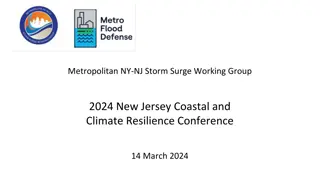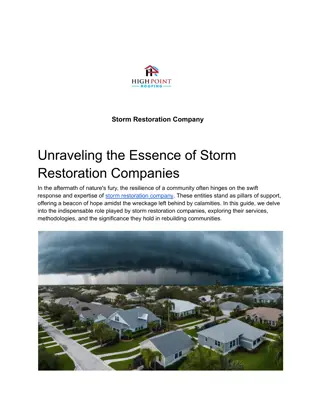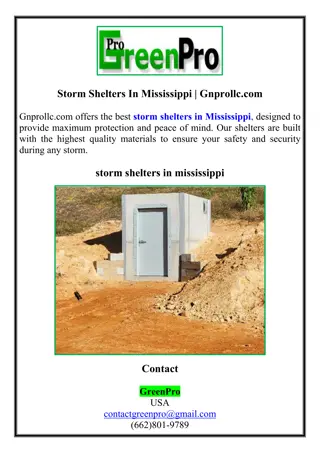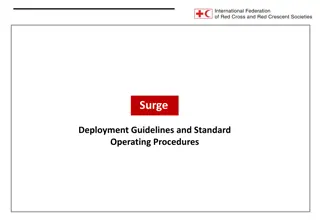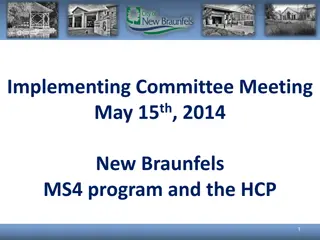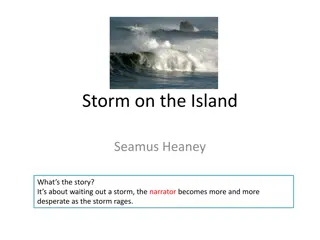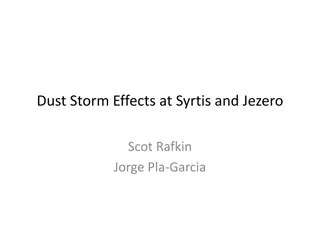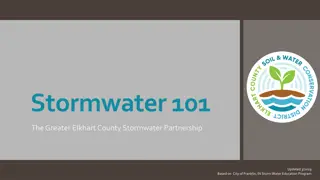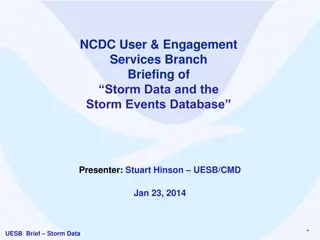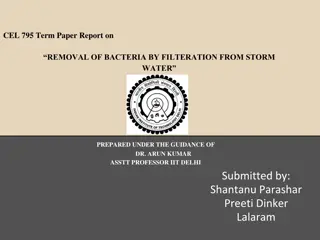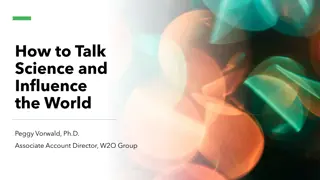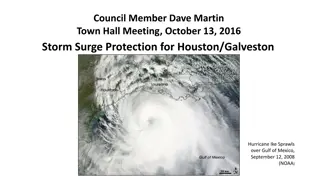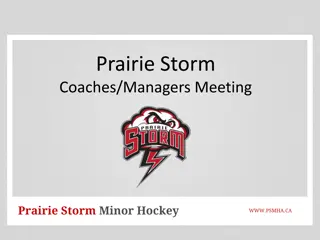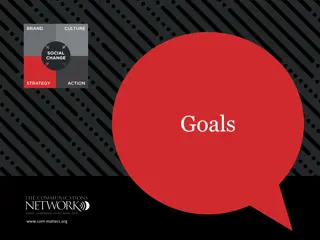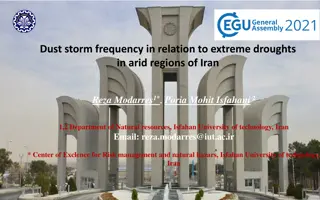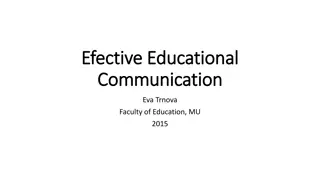Integrating Physical and Social Science for Effective Storm Surge Communication
The integration of physical and social sciences is crucial for effectively communicating complex storm surge threats. Collaborative efforts involve various stakeholders like the National Weather Service, NOAA, emergency managers, social scientists, media, and private sector representatives. Strategies include assessing public and partner needs, conducting interviews, surveys, and prototyping products to enhance understanding and response to storm surges.
Download Presentation

Please find below an Image/Link to download the presentation.
The content on the website is provided AS IS for your information and personal use only. It may not be sold, licensed, or shared on other websites without obtaining consent from the author.If you encounter any issues during the download, it is possible that the publisher has removed the file from their server.
You are allowed to download the files provided on this website for personal or commercial use, subject to the condition that they are used lawfully. All files are the property of their respective owners.
The content on the website is provided AS IS for your information and personal use only. It may not be sold, licensed, or shared on other websites without obtaining consent from the author.
E N D
Presentation Transcript
Supporting Physical and Social Science Integration: Storm Surge Jennifer Sprague National Weather Service National Oceanic and Atmospheric Administration March 7, 2013 1
The Communication Quandary Storm Surge The threat is complex and difficult to communicate! 2
HFIP Socio-Economic Working Group HFIP Socio-Economic Working Group Co-Lead by NHC Director Rick Knabb & Jennifer Sprague Members: NHC: Edward Rappaport, Jamie Rhome & Robbie Berg NWS WFOs: Lance Wood (WFO Texas), Hendricus Lofus (WFO CT) FEMA: Matthew Green (FEMA Liaison at NHC) State/Local Emergency Managers: Chuck Lanza (FL), Mike Sprayberry (NC), Christopher Moore (TX), Social Scientist: Hugh Gladwin Media: Vacant Private Sector: Karen Townsend (HURREVAC) 3
Surge Social Science Strategy Assess Public Need Phase 1 (TC) and Phase 2 (ET) Lazo & Morrow: interviews, focus groups, public surveys Assess Partner Needs Phase 3 Lazo & Morrow: media web interviews and online survey Decision Support for EMs WxEM Tropical use case in NC RENCI, UNC-CH, ECU: multiple methods to assess EMs NOS/CSP & NWS/OST NOS/CSP CSDL Product Prototyping and Evaluation Phase 4 (TC): Inundation graphic, Storm Surge watch/warning ERG: prototype evaluations via interviews, focus groups, public surveys Irene Service Assessment NWS/HFIP Advisory Committee UCAR Community Experimental Products 2013-2015 season Inundation graphic, storm surge watch/warning NWS/NCEP Marketing and Outreach Integrating new products NOS/CSC Operational Products 2014-2016 season Inundation graphic, storm surge watch/warning NWS/NCEP
Assessing Current Storm Surge Information People s Understanding of Hazard & Partner Needs Phase 1: Tropical Results show people do not understand surge or its risk, and want some type of further information Phase 2: Extratropical Uses EM interviews, focus groups, online survey Phase 3: Partner needs Focuses on broadcast meteorologists perceived needs, constraints, and possibilities for new/additional storm surge information
WxEM: Decision Support for Emergency Managers (EMs) EMs desire a locally relevant inundation graphic EMs prefer a range of scenarios versus probability plots EMs desire surge predictions earlier (i.e., 72 hrs or more before TC landfall) Modeling enhancement needed
Product Prototyping & Evaluation NHC hired GIS expert to develop inundation graphic prototypes Social scientists are evaluating prototypes Interviews, focus groups, surveys of EMs and public Prototypes included in broadcast met survey from partner needs project Public survey imminent
Cartographic of Inundation Graphics Small project to apply and evaluate cartographic techniques to inundation graphics Advice on appearance and color scheme Survey of coastal residents Eye-tracking analysis of prototype graphics provided by NHC Results showed preference for an inundation graphic with a range of colors and a scale of descriptive words (low, med, hi, extreme)
FY12 Storm Surge Marketing Plan CSC leading effort via IDIQ contract process Develop a marketing plan for NHC and WFO meteorologists to help EMs and broadcast mets accurately explain storm surge risk to their audiences Understand how information flows between NHC/WFOs and EMs and broadcast meteorologists, and their target audiences, and the roles of each in risk communication Develop marketing plan for NWS and its downstream audiences
Success Story Physical & Social Science Integration Holistic Approach Wide Collaboration Across NOAA


